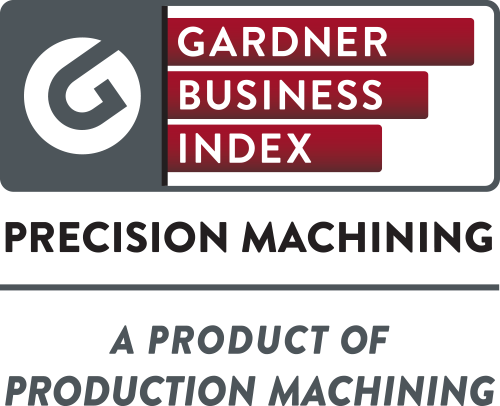Gardner Business Index, Precision Machining, May 2016 - 42.8
Mid-size facilities expanded for the third straight month.

With a reading of 42.8, the Gardner Business Index showed that the precision machining industry contracted for the 14th month in a row. While the index had improved significantly from November 2015 to March 2016, the index showed the industry contracted at an accelerating rate in April and May.
New orders contracted for the second month in a row. The index has fallen sharply the last two months. Production contracted for the 12th straight month, contracting at its fastest rate of 2016. The backlog index contracted for the 21st consecutive month, contracting at an accelerating rate the previous two months. Employment continued to contract in May, although the rate of contraction was slower than in April. The rate of contraction in exports decelerated since April, which was the fastest rate of contraction since the survey began. Supplier deliveries lengthened for the fourth time in five months, but the lengthening was slightly slower than in April.
The material prices index has increased sharply since December, with prices actually increasing the previous three months. In May, the rate of increase in material prices was the fastest since February 2015. Prices received at precision machine shops decreased for the third consecutive month. The rate of decrease was minimal in May. Future business was virtually unchanged in May. The level of expectations still was significantly higher than the second half of 2015.
Facilities with more than 250 employees contracted for the third time in four months. In May, the index fell to 27.8 from 55.6 in March. Plants with 100-249 employees contracted for the fourth month in a row, but the rate of contraction has decelerated each month. Companies with 50-99 employees expanded for the third straight month. In two of those three months, their index was above 55. Companies with 20-49 employees contracted once again after a single month of growth in March. Shops with fewer than 20 employees continued to contract, with the rate of contraction the second fastest since the survey began in December 2011.
For the fifth month in a row, the Southeast region was the strongest region. But, it contracted for the first time since December 2015. Therefore, every region contracted in May. It was closely followed by the North Central-West, Northeast, and North Central-East regions. The West contracted at a somewhat faster rate, while the South Central contracted at its second fastest rate since December 2011.
Future capital spending plans for the next 12 months averaged less than $400,000 per plant for the fourth time in six months. Compared with one year ago, spending plans in May were down 50 percent, which was the fastest rate of contraction since December 2015. Therefore, the annual rate of change contracted at its fastest rate since the survey began.


.JPG;width=70;height=70;mode=crop)
